A design worth considering is a colpitts oscillator with an ADF4111 PLL controlling centre frequency via a varactor diode (other PLLs I'm sure would work just fine). Here's a simple picture of one and I'd replace the transistor with a BFR92A transistor. R4 should be shorted out for decent ops at 400MHz. It's an FM modulator and works nicely. The FM can turn to PM by differentiating the data.

The varactor would be in series with about 22pF from the top of the inductor. The other end of the varactor would be ground and the dc control thru a 10k from the PLL. This pretty much describes a circuit I once designed. I added an extra transistor fed from the base - this was an emitter follower output to a filter and simple antenna. It only produced 0dBm from a 3.3V supply so you may need to run it from a bigger supply or add an amplifier.
You can feed the data (after differentiating and amplitude reduction) via a small capacitor to the varactor. The downside of this is that it needs a little care seting up and if you are not hyper-bothered about the exact phase shift then it should be ok.
A further note about the ADF4111 - it needs a small MCU to set up its registers and a xtal for a frequency reference.

